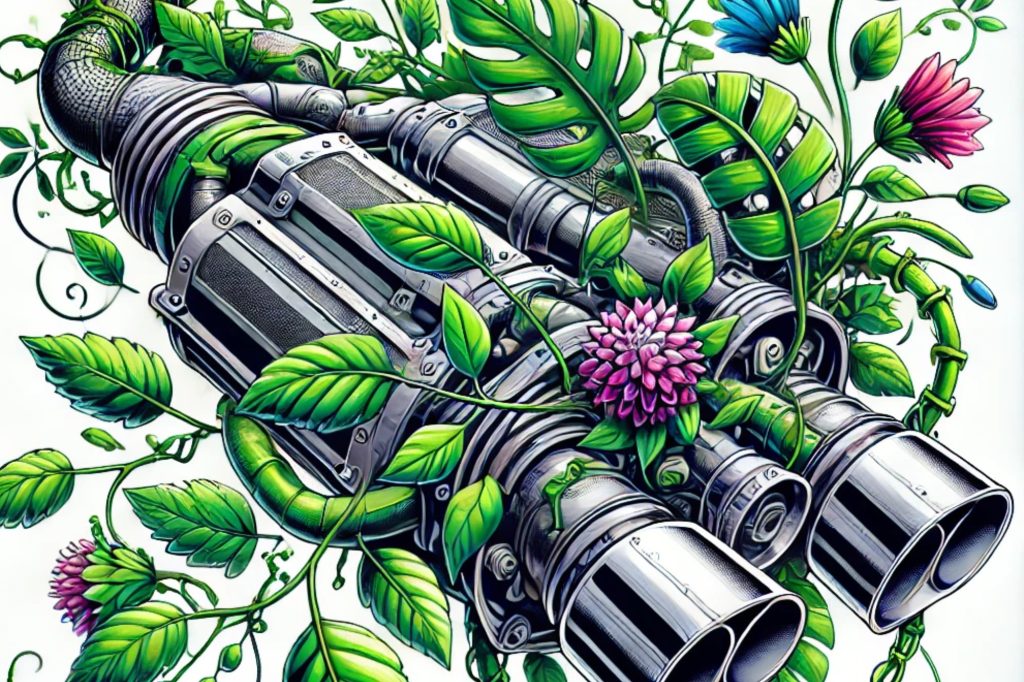Chapter 12: Stomata

If the plant is an engine, then stomata are the intake and exhaust valves – the mechanical gates that regulate the flow of the most essential ingredient in plant metabolism: carbon dioxide.
But these tiny pores do more than open and close. They are dynamic, sensor-driven regulators that respond to real-time environmental conditions, modulating gas exchange with remarkable precision.
CO₂ Intake, O₂ Exhaust
Stomata allow CO₂ to enter the leaf, where it’s used in the Calvin cycle to build sugars. At the same time, they release O₂ – an exhaust gas produced during the light reactions of photosynthesis.
It’s a two-way valve, carefully tuned for balance.
Open too wide, and the plant loses precious water vapor. Stay closed too long, and the plant starves for carbon.
This constant negotiation between carbon gain and water loss makes stomata one of the most critical components in the plant’s control system.
Responsive Throttle Control
Stomatal behavior isn’t fixed, it’s dynamic. These valves adjust their aperture in response to:
Light intensity – More light = more photosynthetic demand = wider opening
CO₂ concentration – Low internal CO₂ = open wider to capture more
Humidity and water pressure – Low humidity or water stress = close to conserve
Hormonal signals – Abscisic acid (ABA) is the emergency brake that triggers closure during drought
This makes stomata the equivalent of real-time throttle control. The engine is always responding to the terrain.
Guard Cells: The Actuators
The opening and closing of each stomatal pore is controlled by a pair of specialized guard cells. These cells inflate or deflate by pumping ions in and out, which causes water to follow via osmosis.
This movement is driven by proton pumps, potassium ion gradients, and complex feedback loops involving calcium and reactive oxygen species.
It’s a precise, chemically-driven mechanical action – not unlike solenoids or actuators that control air intake in a car engine.
Internal Optimization: CO₂ Gradients and Rubisco Efficiency
The goal isn’t just to open stomata – it’s to optimize CO₂ delivery to Rubisco, the carbon-fixing enzyme in the chloroplast.
This is where thylakoidal carbonic anhydrase plays a key role, converting CO₂ to bicarbonate and back again to buffer internal concentrations and keep CO₂ availability high right where it’s needed.
The stomata and the Calvin cycle are tightly coupled. One regulates access; the other drives demand.
The Takeaway
Stomata are not passive holes – they are adaptive valves that balance gas exchange, water loss, and metabolic demand. They connect the plant to the atmosphere while protecting it from dehydration.
In the language of engines, stomata are the intake and exhaust system, equipped with intelligent, sensor-based control.
Next up: Hormones – The Timing Belts and Steering Racks of Plant Physiology.

